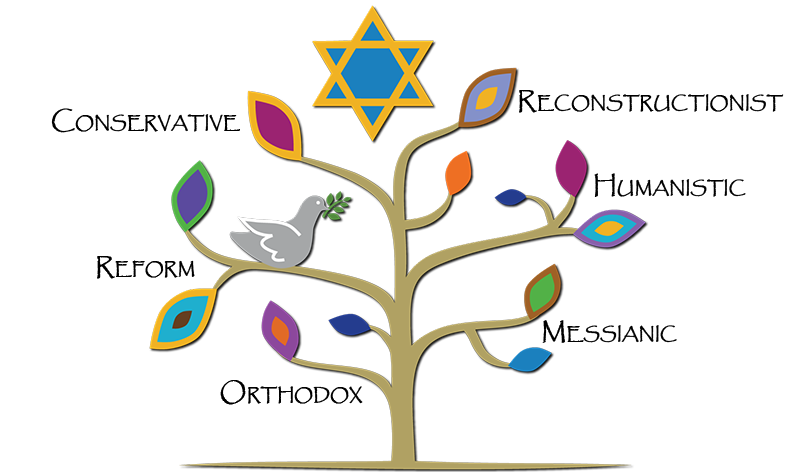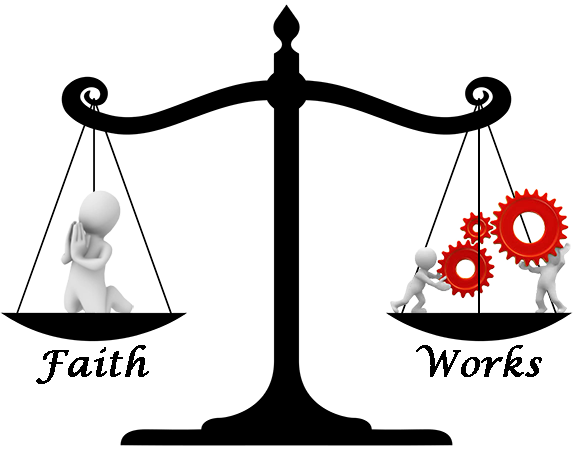

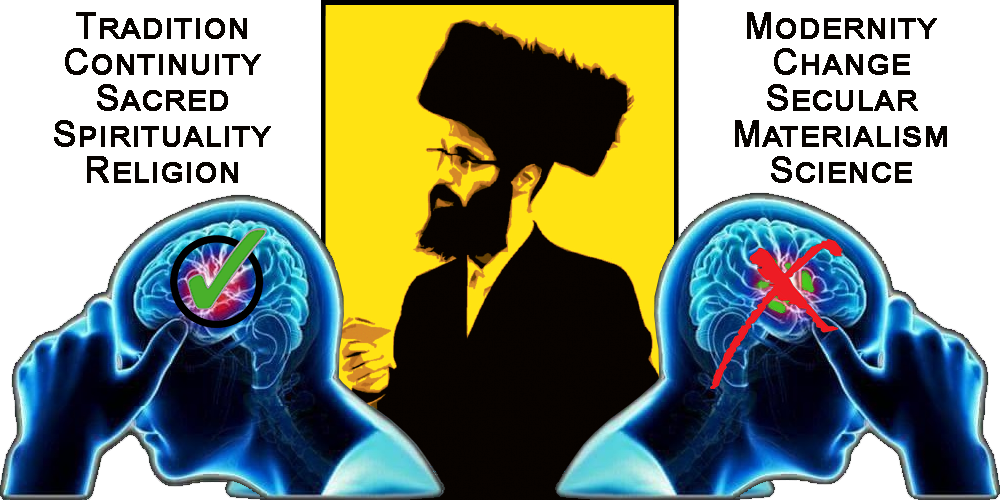
Judaism,
like all modern religions, has struggled to meet the challenge of
secularization: the idealization of science, rationalism,
industrialization, and materialism. The response of the Orthodox has
been to stand by the Torah as the revealed word of God and the
Talmud as the legitimate oral law. Orthodox Jews feel that they are
bound by the traditional rabbinical halakhah,
as a way of achieving closeness to God. But within this framework there
are great individual differences [e.g. Ultra-Orthodox (Haredi), Modern-Orthodox, Hasidic, Chabad (Lubavitchers)], with no central authority figure or
governing body. (Living Religions, 291)
|
Laying Tefillin

Prayer Service
 Keeping Kosher
Keeping Kosher
 Kosher Certification
Kosher Certification
 Torah, Talmud & Halacha
Torah, Talmud & Halacha
 Studying Torah & Talmud
Studying Torah & Talmud
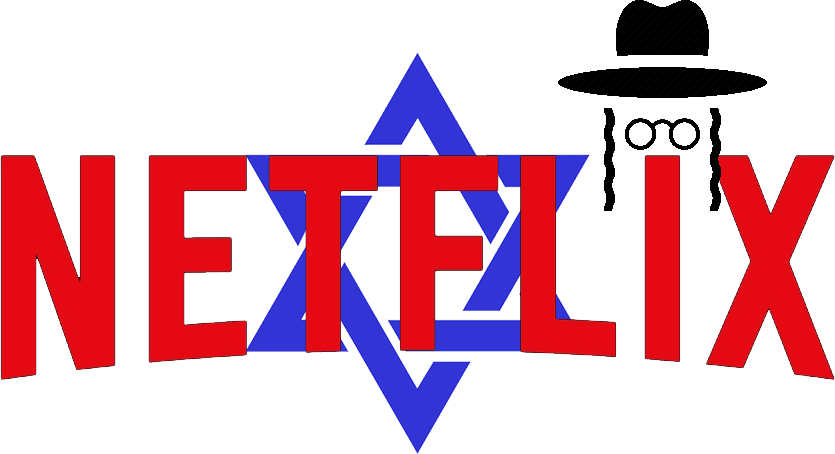
|
Orthodox Judaism on Netflix
|

The
Reform (or Liberal) movement, at the other end of the spectrum, began
in nineteenth-century Germany as an attempt to help
modern Jews appreciate their religion and find a place for it in
contemporary society, instead of regarding it as static and antiquatd.
In imitation of Christian
churches, synagogues were redefined as places for spiritual elevation,
with choirs added for effect, and the Sabbath service was shortened and
translated into the vernacular. The liturgy was also
changed to
eliminate references to the hope of return to Zion and animal
sacrifices in the Temple. Women and men were allowed to sit together in
the synagogue, in contrast to their traditional separation. Halakhic
observances were re-evaluated for
their relevance to modern needs, and Judaism was understood as an
evolving, open-ended religion rather than one fixed forever by the
Torah. (Living Religions, 292-3)
|
 Bar Mitzvah Invitation
Bar Mitzvah Invitation
 Bat Mitzvah Torah Portion
Bat Mitzvah Torah Portion

The
liberalization process has also given birth to other groups with
intermediate positions. With roots in mid-nineteenth-century Germany, Conservative Judaism seeks
to maintain, or conserve, traditional Jewish laws and practices while
also using modern means of historical scholarship, sponsoring critical
studies of Jewish texts from all periods. ... Conservative Jews believe
that Jews have always searched and added to their laws, liturgy, Midrash, and beliefs to keep them relevant and meaningful in changing times. Conservative women have long served as cantors and have been ordained as rabbis since 1985. (Living Religions, 293)
|
|
Rabbi
Mordecai Kaplan, an influential American thinker who died in
1983, branched off from Conservatism and founded a movement called Reconstructionism.
Kaplan held that the Enlightenment had changed everything and that
strong measures were needed to preserve Judaism in the face of
rationalism. Kaplan asserted that “as long as Jews adhered to the
traditional conception of the Torah as supernaturally revealed, they
would not be amenable to any constructive adjustment of Judaism that
was needed to render it viable in a non-Jewish environment.” ... Kaplan
created a new prayer book, deleting traditional portions he and others
found offensive, such as derogatory references to women and Gentiles,
references to physical resurrection of the body, and passages
describing God as rewarding or punishing Israel by manipulating natural
phenomena. (Living Religions, 293) |
|
In addition to those who are affiliated
with a religious movement, there are many Jews who identify themselves
as secular Jews, affirming their Jewish origins and maintaining
various Jewish cultural traditions while eschewing religious practice. (Living Religions, 293) |
|
The “Messianic Jewish identity” is wholly dependent on the person of
Yeshua: God Himself comes to earth to reconcile the Jewish people and
all nations to Himself. (See our Statement of Faith to find out more.)
“All we like sheep have gone astray; we have turned every one to
his own way; and the LORD has laid on him the iniquity of us all.”
Isaiah 53:6
The foundation of Messianic Judaism, therefore, is each individual’s
personal relationship with the God of Abraham, Isaac and Jacob through
Messiah Yeshua. In the Hebrew Law God clearly demands a blood sacrifice
for the remittance of sins. Each Messianic Jew recognizes his or her own
sinfulness and has accepted that Yeshua Himself provided this
sacrifice.
Another important aspect of the Messianic Jewish movement is Jewish
congregational worship. If Yeshua really is the Jewish Messiah of whom
all the Jewish Law and Prophets spoke, then it is the most Jewish thing
in the world to follow Him!
Should Jews really attempt to assimilate into churches and forego
their Jewish identity when they choose to put their faith in the Jewish
Messiah? Messianic Judaism answers, “No!” As Yeshua Himself embraced His
Jewishness, Messianic Jews seek to embrace theirs, by meeting in
congregational communities with other Jewish believers and by
maintaining a Biblically Jewish expression of their faith. Every
congregation is different, but this expression often means worshiping in
Hebrew, following Mosaic Law, dancing as King David did before the
Lord, and keeping Biblical holidays such as Pesach, Sukkot, or Shavuot.
Also important is Messianic Judaism’s ministry to both the Jewish
community and the Christian body of believers. Messianic Jews are part
of the larger Body of Messiah throughout the world, and Messianic Jews
hope to help all believers in Yeshua to better understand the Jewish
roots of their faith. Finally, Yeshua declared that no-one can comes to
the Father – the God of Israel – except through Him (John 14:6).
Messianic Jews seek to share this way, this truth, and this life with
their Jewish brothers and sisters. (Messianic Jewish Alliance of America)
|
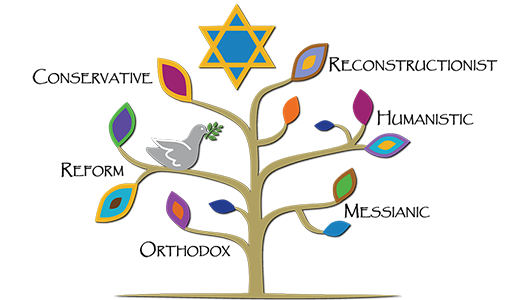
|
